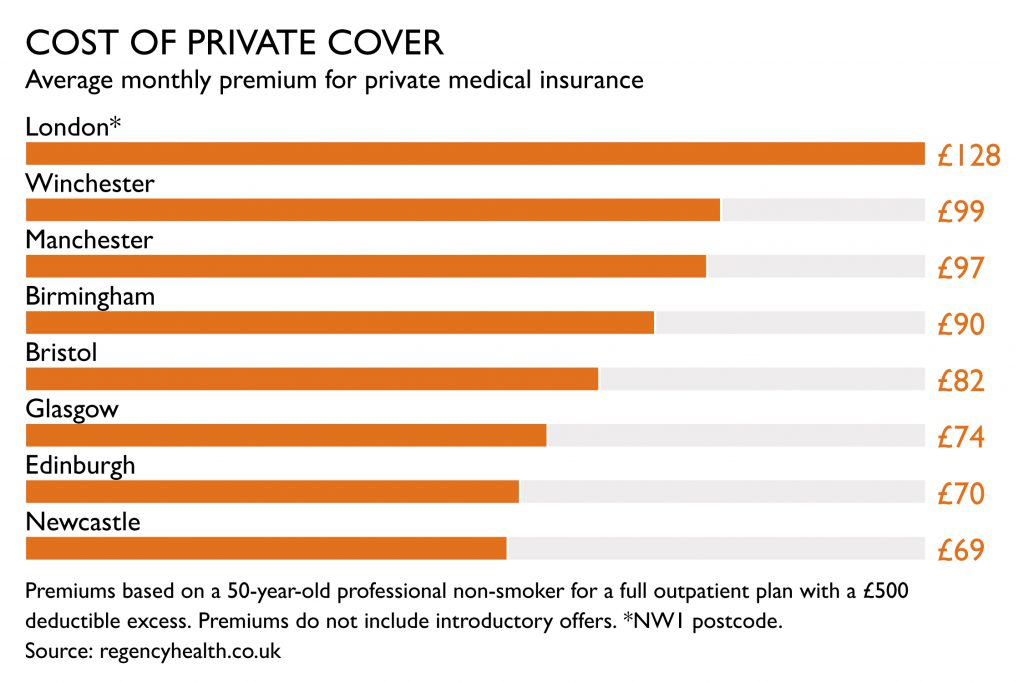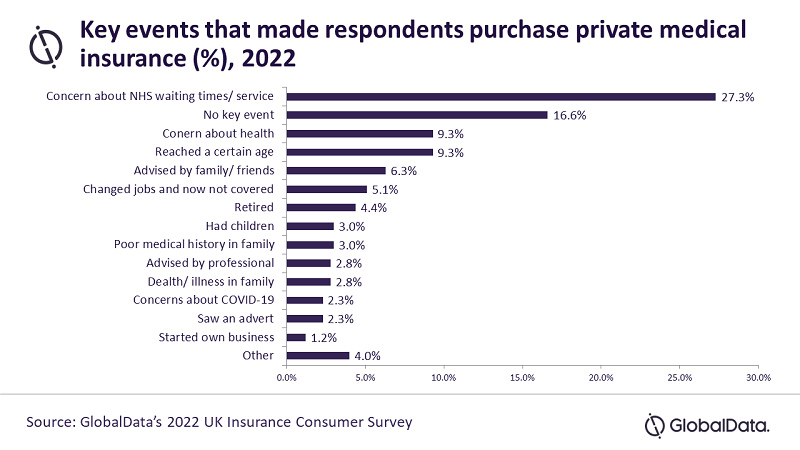Summary
In 2024, the UK’s private healthcare market is marked by rising private medical insurance usage and an increase in self-pay procedures due to long NHS wait times, prompting organisations to explore new service lines and expand geographically.
To secure a larger market share, it’s essential for healthcare providers to innovate, use digital marketing, focus on exceptional patient experiences, and continually adapt to evolving market dynamics and regulatory changes.
Introduction
Whether you’re a seasoned player or a new entrant, the goal remains the same: to grow market share and solidify your position as a leader in the healthcare industry.
However, navigating the complexities of the UK’s private healthcare market can be a daunting task. The landscape is constantly evolving with consumer expectations, technological advancements, and regulatory frameworks all playing pivotal roles in shaping the sector’s future.
It’s a competitive arena where staying ahead of the competition requires understanding the nuances of market dynamics and adapting with agility.
In this guide, we’ll explore actionable strategies to help you gain a competitive edge and maximise profitability in the UK private healthcare market.

Understanding Market Dynamics
To effectively grow market share, it’s crucial to understand current market dynamics and how they impact the private healthcare industry as a whole.
Understanding factors such as market trends, competitive forces, and regulatory considerations, is your first step towards identifying areas where growth opportunities lie.
Key market trends in 2024
1) Rise of private medical insurance (omi): The number of admissions paid for with private medical insurance remained at the second highest level in records.
2) Increase in self-pay procedures due to NHS waiting times: There is a significant increase in people opting to pay out-of-pocket for private treatment because of long NHS waiting lists.
3) Demand from an ageing population: The UK is experiencing an increase in its older population, which is driving the demand for advanced home healthcare services.
4) Digital transformation: Telemedicine, digital diagnostics, and AI-powered tools are no longer futuristic concepts — they’re currently transforming patient experiences while offering new avenues for efficiency and cost-effectiveness.
Competitive forces
Increased competition: Increased opportunities will inevitably lead to more companies looking to supply their services, so organisations will need to work harder to stay ahead of the competition.
Dominance of major players: The UK health insurance market is dominated by major players who have significant influence on market dynamics and the competitive landscape (e.g. AXA, BUPA, WPA, Simply Health, and Freedom Health Insurance).
Pmi providers becoming “risk-poolers”: The shift to risk-pooling empowers private medical insurance providers to become more active players in the healthcare market, by allowing them to leverage their larger pool of insured individuals to negotiate better deals and manage costs more effectively.
This can indirectly create a more competitive environment where hospitals and other care providers adapt their service delivery models to compete.
Regulatory considerations
1) Net zero strategy: The NHS’ Net Zero strategy is imposing new carbon reduction requirements on suppliers, which will impact procurement processes and supplier operations.
2) Data protection and privacy: New compliance requirements, such as Google’s Health App Policy, are setting higher standards for privacy and data protection in health apps — influencing how digital health services are provided.
3) Transition to UKCA marking: The UK is transitioning from the EU’s CE marking to the UKCA marking, a significant change in product certification standards that will affect medical devices and technologies.
Identifying Growth Opportunities
Identifying growth opportunities involves closely monitoring current market trends and the competitive landscape. In the evolving UK private healthcare market, there are several potential avenues for growth, including:
1) Expansion into new service lines
With the rise in private admissions, there is an opportunity to expand into new service lines to cater to the increasing demand. This could include offering specialised services or treatments that are not widely available in the NHS.
2) Geographic expansion
The UK private healthcare market is not uniform and there are certain regions with higher demand for private healthcare services. Expanding operations into these areas could be a viable strategy for growth.
3) Targeting specific demographic segments
Certain demographic groups (such as the elderly) are driving the demand for advanced home healthcare services. Tailoring services to meet the needs of these specific segments could open up new opportunities.
4) Strategic partnerships & acquisitions
Forming strategic partnerships or making acquisitions can provide a quick way to expand market share. This could involve partnering with other healthcare providers or acquiring practices that complement your existing services.

Enhancing Service Offerings
To thrive in the UK private healthcare market, you need to excel at delivering high-quality services that cater to the evolving needs and preferences of patients. This entails embracing innovation, adopting technology, and focusing on patient-centric care models.
Innovation in healthcare leads to advancements in medical treatments, diagnostic techniques, and preventive measures — resulting in better health outcomes.
Technology plays a pivotal role in modernising healthcare services, with the adoption of digital technologies in healthcare accelerating at an unprecedented rate.
From electronic health records to telemedicine services, technology can significantly improve access to healthcare, reduce errors, and help streamline operations.
Lastly, patient-centric care models which take a holistic view of a patient’s health ensures that services are tailored to the individual needs of patients. This approach can lead to better patient engagement and higher satisfaction ratings.
Differentiating Through Branding & Marketing
Creating a strong brand presence and effectively marketing healthcare services requires a combination of understanding your target audience, strategic planning, and clear communication of your value proposition.
Here are some branding and marketing strategies to help you differentiate your healthcare organisation in a competitive market:
1) Understand your target audience
Conduct thorough market research to understand the demographics, psychographics, needs, and preferences of your target audience. This will help tailor your branding and marketing efforts to resonate with them.
2) Develop a unique value proposition
Clearly define what sets your healthcare services apart from competitors. This could be anything from specialised expertise, innovative technology, exceptional patient care, convenient location, or unique service offerings.
Your value proposition should address the specific needs and pain points of your target audience.
3) Create a compelling brand identity
Develop a strong brand identity that reflects your values, mission, and unique selling points. This includes your brand name, logo, colours, fonts, and messaging. Consistency is key across all touchpoints to build brand recognition and trust.
4) Differentiate through experience
Consider how you can differentiate your healthcare services through the patient experience. This could involve offering personalised care, shorter wait times, comfortable facilities, easy appointment scheduling, or seamless communication channels.
5) Utilise digital marketing
Leverage digital marketing channels such as social media, search engine optimization (SEO), content marketing, email marketing, and online advertising to reach and engage with your target audience. Develop compelling content that educates, informs, and resonates with your audience.
6) Emphasise trust & credibility
In the healthcare industry, trust and credibility are paramount. Highlight certifications, accreditations, awards, patient testimonials and success stories to build trust with potential patients.
7) Engage with the community
Participate in community events, health fairs, and local initiatives to increase brand visibility and demonstrate your commitment to improving community health. Sponsorships, partnerships, and collaborations with other organisations can also help expand your reach.
8) Monitor & adapt
Continuously monitor the effectiveness of your branding and marketing efforts through metrics such as website traffic, social media engagement, patient inquiries, and conversion rates. Analyse data to identify areas for improvement and adapt your strategies when necessary.

Optimising Patient Experience
Delivering an exceptional patient experience directly influences customer loyalty and the likelihood of positive word-of-mouth referrals. Positive experiences ultimately lead to higher patient satisfaction, which often translates into better patient retention rates.
When patients feel heard, respected, and cared for, they develop a sense of trust and loyalty with their healthcare provider. To optimise patient experience, satisfaction, and retention, you should focus on best practices such as:
– Personalising patient care to address individual needs and preferences.
– Ensuring clear and compassionate communication throughout the patient’s journey.
– Providing a comfortable and welcoming environment.
– Implementing efficient processes to reduce wait times and streamline visits.
– Gathering and acting on patient feedback to continuously improve service quality.
Investing In Talent & Training
The recruitment and retention of top talent, coupled with ongoing training and professional development, are essential elements of the healthcare industry.
Skilled professionals deliver high-quality care, and continuous training ensures they remain at the forefront of medical advancements and service excellence.
This investment in human resources is critical for maintaining a high standard of patient care and operational efficiency. Top tier talent also fosters an environment of expertise and dedication, which is the backbone of any robust healthcare system.
Concluding Thoughts & Recommendations
The UK private healthcare market presents a series of unique challenges and opportunities. As patients’ needs and preferences evolve, healthcare providers must adapt to ensure that their services remain relevant and effective.
To grow market share in this dynamic sector, healthcare organisations need to stay agile and adaptable by keeping a close eye on market dynamics and adjusting strategies accordingly.
Actionable recommendations to increase market share include:
1) Conduct market research: Understand the needs and preferences of your target audience to tailor your marketing strategies effectively.
2) Leverage competitive intelligence: Leverage competitive intelligence tools to monitor, analyse, and understand your competitors’ strategies to gain a competitive edge.
3) Utilise digital marketing: Utilise SEO, content marketing, and social media to increase visibility and engage with potential clients.
4) Focus on service excellence: Ensure that every patient interaction is an opportunity to showcase the quality of your services.
5) Foster a culture of innovation: Encourage continuous learning and adaptation to keep pace with medical advancements and changing market demands.
By implementing the strategies in this guide, you can enhance your market presence, improve patient care, and develop a sustainable competitive advantage.


